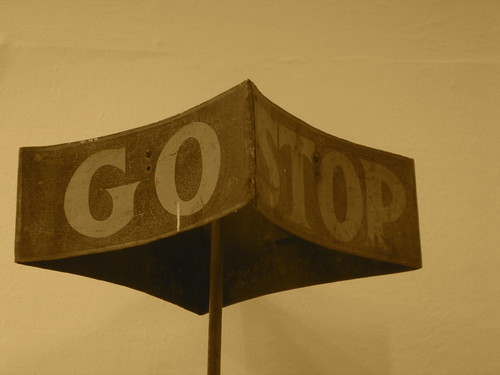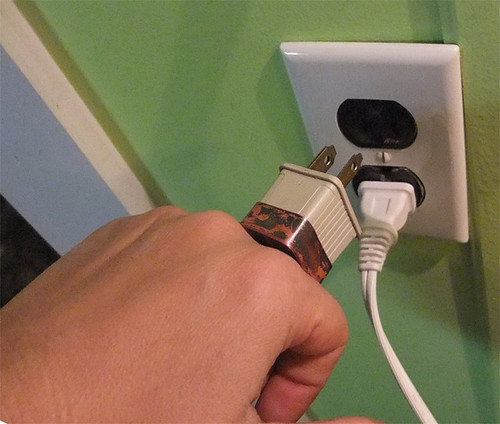
The You Show is distributed by design. Participants publish their course work in spaces they own and manage, but we also use what we refer to as “syndication” technologies to continually update this main site with updates of activities by everyone involved.
These can include social media (e.g. tweets using the #youshow15 hashtag) but a primary locus of activity is in participant blogs. Each time you update– tweeting a status update, publishing a blog post– behind the scenes these sites produce something in computer code that broadcast the time, location, and content of the new information. Typically the technology is RSS, which can mean Really Simple Syndication or Rich Site Summary.
For your part in the You Show, you will have to creating a new space for your project. Even if you are one of the top educational bloggers in the world or have been running your own blog since 2002, the purpose of the kind of site you will work on should be stand alone. Just give a try making something new, and we can always assist you later in importing whatever you produce into another blog.
In the sections below, we provide some guidance to help you get started and connected:
- Decide which blog platform to use (and create the new blog)
- Enter your blog’s information into the signup form that connects the site where you will publish your work to this site. See the blog posts from all blogs connected so far.
Ahhh, but where to blog? You have options to ponder. And actually it does not matter too much what you choose.
Where to Blog?

creative commons licensed ( BY-NC ) flickr photo shared by eltpics
For the purposes of the You Show, it does not matter which blogging platform you choose. If you are familiar with one, use that. If you have helpful friends, colleagues nearby that have experience in another, try that. If you want to learn a new one… this is a great opportunity. But the platform itself does not dictate what you will be able to do with it.
All that matters is that the blog platform can publish an RSS feed of your activity. How do you know? If unsure, check the home page address of any blog published in that platform in our Magic Box and it will let you know if it finds one.
Also, your blog must be publicly viewable; we cannot syndicated any posts from it if the privacy settings are set to require a password. Log out of your blog editor, and make sure you can still view your blog. Or use a different web browser where you are not logged into your blog. Or ask a friend to check your URL.
The ultimate solution for many of us is encouraging participants to establish their own internet domain, completely owning and controlling a digital space where ones installs a blogging platform. This is the premise of the University of Mary Washington’s A Domain of One’s Own (and spreading elsewhere). As individuals, you can consider setting up such a space via Reclaim Hosting for a very low price.
But that might be a lot to start with, so you can choose as well from blogging services that are hosted for you. These are usually free, but may have fewer feature and some advertisements compared to a fully self-hosted blog.
If you are affiliated with TRU, you can also use a sandbox wordpress site at https://trubox.ca… that’s right, you would be in the same building as the You Show. Just contact Brian Lamb and he can set you up.
Here is the best thing- you are not married to your first choice, there are ways to migrate blogs to other platforms; if you wanted to you easily could import your blog from any other platform into a WordPress site.
The platform does not matter as much as the idea of distributed publishing and syndication.
Now about that blog of yours…
WOAH, SLOW DOWN! BEFORE YOU START CREATING A BLOG…

creative commons licensed ( BY ) flickr photo shared by kewl
You will have to come up with a unique name that will be part of your URL, and this is something that cannot be changed. Most likely, if your name is Brian, then brian.tumblr.com is already taken (yep, someone is running an empty blog named Untitled there, slick.).
Be creative! It make take a few attempts to find a domain that is not used. I would suggest avoiding ones that include a specific year in it (e.g. myshow2014.wordpress.com) — what if you really like using this site, say 5 years from now? Do you really want the year attached?
You will also have to create a title for the blog; in this case you have the flexibility to change it at any time, but it is good creative practice to try something more original than “My Portfolio” (yawn, boring). The title is where it will be listed on the site, and how other people cite your blog. Be creative in your title. Be very creative.
An interesting title goes a long way.
Okay, Choose a Blog Platform

creative commons licensed ( BY-NC-SA ) flickr photo shared by sashamd
We will try to make this a bit easier than swinging a stick! If you are new to blogging, We recommend the following (not in any particular order):
- WordPress.com a hosted version of the most popular blogging platform. You get a good selection of themes and features (but not quite as many options as hosting your own blog). We use wordpress at the You Show and can be most helpful with supporting you there. It has maybe the best built in features to customize and organize your content (you can use both categories and tags)
- Blogger is Google’s hosted platform, so is fully integrated with your Google account and other tools. Blogger offers a wide range of themes and features to customize your blog. Blogger offers “labels” as a way to organize your content.
- tumblr is less thought of as a blogging platform, and is often more focused on media, but offers everything you need to write and organize your content, and its interface for writing is the least complex. Like WordPress and blogger, tumblr offers a range of themes to choose from. It takes a little more digging to find features for creating pages and enabling comments. With tumblr you organize content with tags.
If you are experienced in running your own web site, you can certainly install your own copy of WordPress, drupal, joomla or other blog platform.
This is by no means all the options, you can use in addition TypePad, Squarespace, Weebly or a wide range of newer “minimalist platforms”.
Ok Go! Make a Blog

creative commons licensed ( BY-NC ) flickr photo shared by Dan Dickinson
Pick your blog, make the site. DO not spen a whole lot of time now trying to make it pretty and messing with the theme (although we know you will, that’s what we would do). But think of it as building a house, in the first week we will work on the foundation and the framing of the structure, then we will start decorating and painting in weeks 2 and beyond.
But write a first blog post. Or more. Feel free to introduce yourself, talk about your interests in connected courses, or just let us know what you had for lunch. But make sure your blog has at least one post on it.
And right away, start thinking about using images and/or other media in your blog.
Now Connect Your Blog (Time to Fill Out the Form!)

creative commons licensed ( BY-NC-SA ) flickr photo shared by MetalRiot
To connect your blog to this site, we have a web form that collects some information from you, and if all goes well, completely automates the process or connecting in to the You Show. What you should have ready for the signup form is:
- A twitter account is recommended but not strictly required. We use it on the site as a unique identifier to associate the author of a new blog. You will also need twitter to participate in the You Show Daily challenges.
- The web address for your project blog. This should be the main/home page of a new or relatively new blog, e.g.
http://portfolioofabigdog.blogspot.com/. - There should be at least one post available at the web address in the previous step. Make sure you have written at least an introductory post.
In the web form you will use our Magic Box to automatically determine the RSS Feed address for your blog. You can do this ahead of time, and just make sure you copy thr web address of the RSS feed it finds for you.
The way RSS feeds appear in a web browser differ depending on which browser you use. It most likely looks like code gibberish (unless you are fluent in code gibberish). Technically it is XML, or a structured data representation of all the blog’s content. Each entry includes a title (title of a blog post), the date it was published, a link to the single post, and then the HTML for all of the post’s content. If you explore a bit, you should be able to match the content from your RSS Feed to your own blog as seen in a web browser.
The rest of the form will ask for some demographic and interest questions to help us group blogs.
If all goes well, your blog will be listed on the site at http://youshow.trubox.ca/all-blogs/. Give the site at least an hour before you check this link– to reduce load on remote servers, our site will only knock on the door of your site once an hour to see if there is new content.
And now you should be ready to connect!
Connect My Blog Now